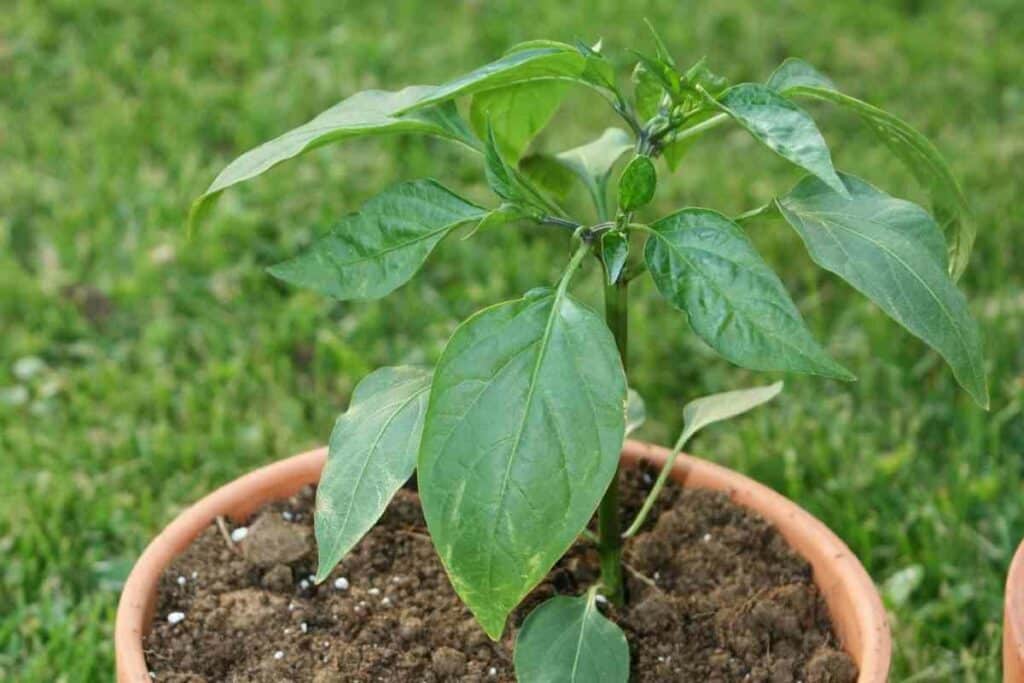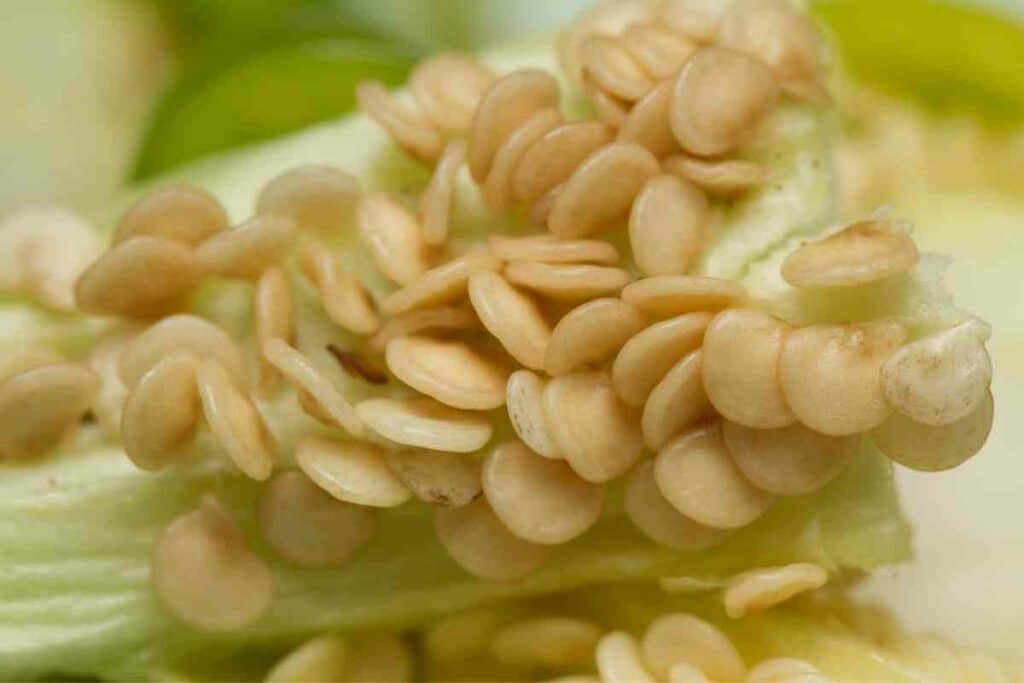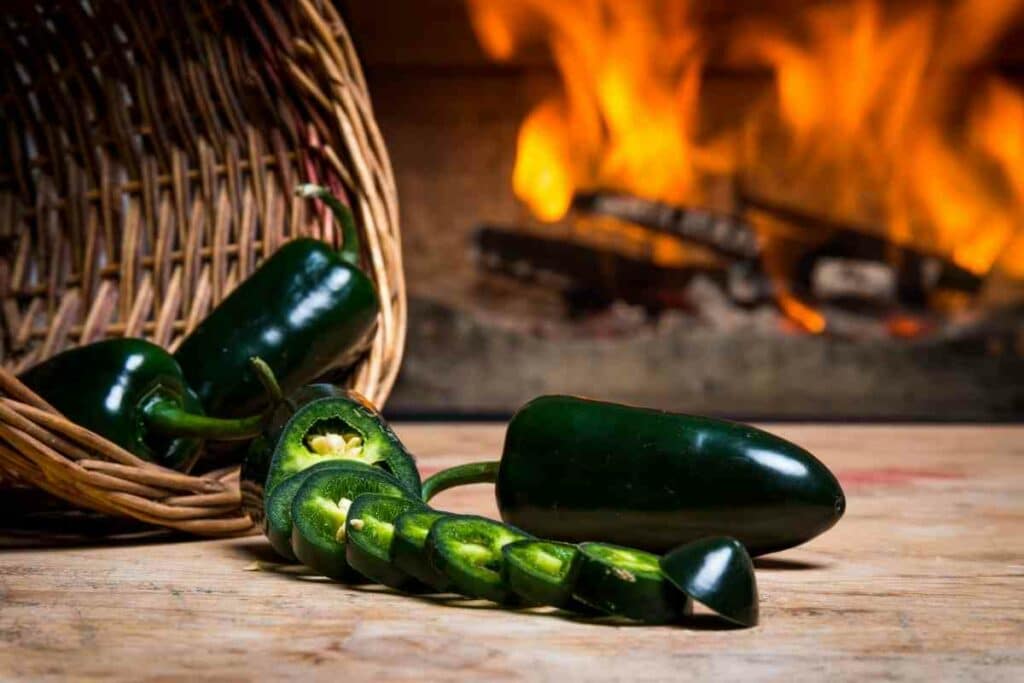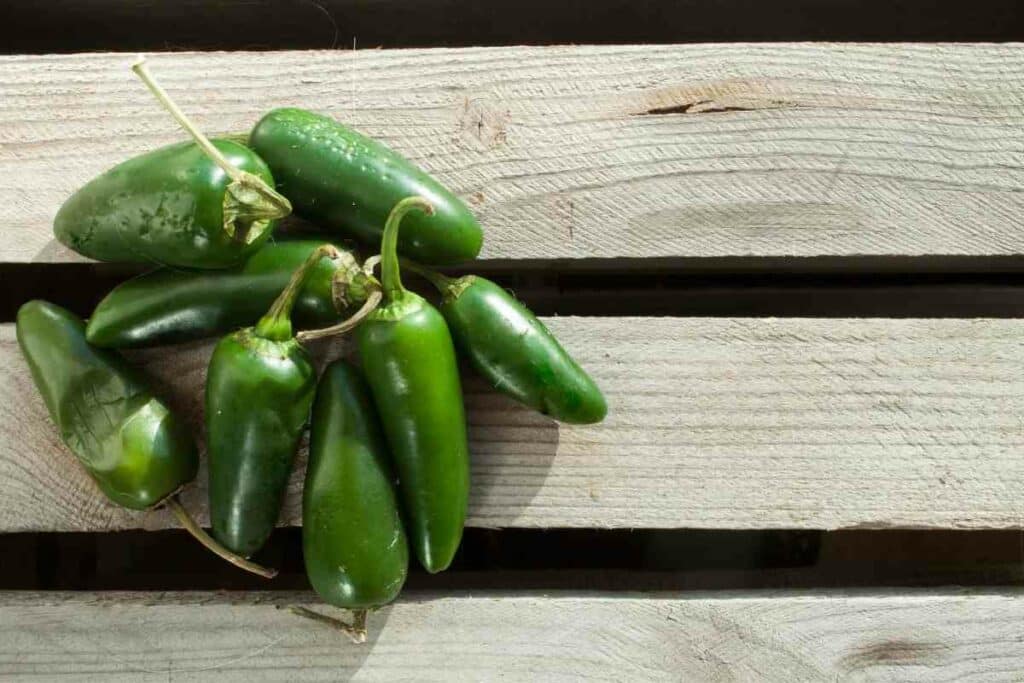A pot of Jalapeños on your patio or kitchen window will not only spice up your meals but also make a beautiful riot of color.
Growing Jalapeños is an immensely satisfying growing project that anyone can enjoy as you don’t even need a garden!
If you’d like to give growing Jalapeños a go, this comprehensive growing guide shares everything you need to know to enjoy some prolifically cropping Jalapeños in a pot or container this summer.
What is it about Jalapeños?
Even the name of this popular chili pepper variety brings heat and spice and is a crowd-pleaser in a wide range of dishes.
The name “Jalapeño” derives from the city Xalapa”, the capital of Veracruz, Mexico where this chile was originally cultivated.

This cultivar of Capsicum annuum is plucked green and has a moderate heat of 6,000 to 8,500 Scoville units.
Plants usually produce 25 to 30 of these chilies per season, with each of these chunky peppers growing up to 5 cm long.
How to grow Jalapeños from seed
It takes more time than buying a plant, but starting your pot of Jalapeños from seed is cheaper and, in our opinion, much more satisfying.
However, it will take more time, as Jalapeños are slow to germinate and grow.
When should I start growing Jalapeño seeds?
To ensure that your young plants will be ready in time to crop in the warm summer weather, you’ll need to get your seeds planted at least 2 months before the last frost.
Germinating Jalapeño seeds
Start Jalapeño seeds in seed trays that are filled with rich potting compost, or use small individual pots or cut-off bottle ends.
Follow the process:
- Water the soil liberally before adding the Jalapeño seeds.
- Add two to three seeds to each container. Plant the seeds at a depth of ¼ inch (0.63 centimeters). The soil should completely cover the seeds with soil.
- Place the planted seeds in a warm, but dim location to germinate. While you wait for germination, keep the soil moist.
You can also help your seeds keep warmth and moisture by placing a polyethylene bag with a hole over the pots.
What to Expect? Germination of Jalapeño seeds usually takes between 2 and 3 weeks.
Caring for Jalapeño seedlings
Once seedlings appear, grow them indoors until they are strong enough for transplanting to your ideal pot.

Place them in a warm and well-lit location with temperatures no lower than 65 °F (18°F).
The lighter the better, as Jalapeño seedlings and young plants need at least 14 hours of sunlight daily.
If you sow multiple seedlings in a pot, you will need to thin them so that the strongest seedling can grow on.
You can do this after the first pair of leaves appear.
Don’t Forget – Keep the soil of the seedling moist and ensure that there is good drainage so that the growing plant can develop its roots properly.
Transplanting Jalapeño seedlings
The young Jalapeño plants need to be transplanted to larger pots and containers.
Make this a gradual process with sequential transplanting to larger and larger pots.
Prepare your pots and containers with rich compost, moistened with light watering, and transfer the entire pot of soil to the new larger pot.
Be careful not to damage the roots of the Jalapeño plant or pack the soil too densely when repotting.
Terracotta is a great material for a chili pot because it regulates the moisture in the pot and retains heat beautifully.
Hardening off Jalapeños
If you intend to grow your Jalapeño plants outdoors, they will need to be hardened off.

The process involves keeping them outside for periods of increasing length, then bringing them back indoors.
This helps the plant gradually adapt to being outside.
Caring for Jalapeño plants
Maturing Jalapeño plants need the right conditions and care to provide you with a good yield.
Wherever you place your pot, make sure your plant gets:
- Adequate sunlight: Jalapeño plants need between 8 and 10 hours of sunlight daily. Make sure your pot has a sunny spot reserved!
- Moist soil: for the Jalapeños to be adequately watered the soil should be moist. Most plants require watering every other day. Avoid over-watering, as this can cause root rot.
- Feed a diluted fertilizer: rather than dosing up with concentrated feeds, why not dilute your fertilizer and feed with every third watering? Continue fertilizing until 2 weeks before your chilies come through.
When are my Jalapeños ready to pick?
Jalapeños take 80 to 120 days to grow.

For harvesting, timing is everything as you have to get the Jalapeños when they are a classic green.
If left on the plant (up to 120 days) they will ripen further and turn yellow or red, but harvesting green chilis promotes the plant to fruit more!
Harvesting Jalapeños
Harvesting Jalapeños is easy.
Simply pick the green pepper straight off the plant. As you pick, more blossoms are forced, which will develop into new Jalapeños.
If you keep on top of harvesting, you can enjoy an abundance of these little spicy packages!
…and the shortcut. Buy a chilli plant!
If you are looking for a lower maintenance approach to growing some chilies, you can simply buy a young Jalapeño chili plant and jazz it up in a funky container or pot of your choice.
You can buy young, healthy Jalapeño plants from plant nurseries, garden centres and even some grocery stores.
Once you set up the plant in its new home, the same care and harvesting applies.
Using your Jalapeños

Jalapeños are a nutritious food, rich in vitamin A and C.
You can use them in a wide variety of dishes, or string them and dry them for use later in the year. Here are some classic Jalapeño recipes:
- Pickled Jalapeños here
- Jalapeño poppers here
- Jalapeño chicken Here
Rounding up
Home-grown Jalapeños will really spice up your life and your diet!
This is a cheap and easy way to grow something that the whole family can enjoy.
And if you love collecting plant pots and containers, you’ll be able to fill your collection with productive plants!
